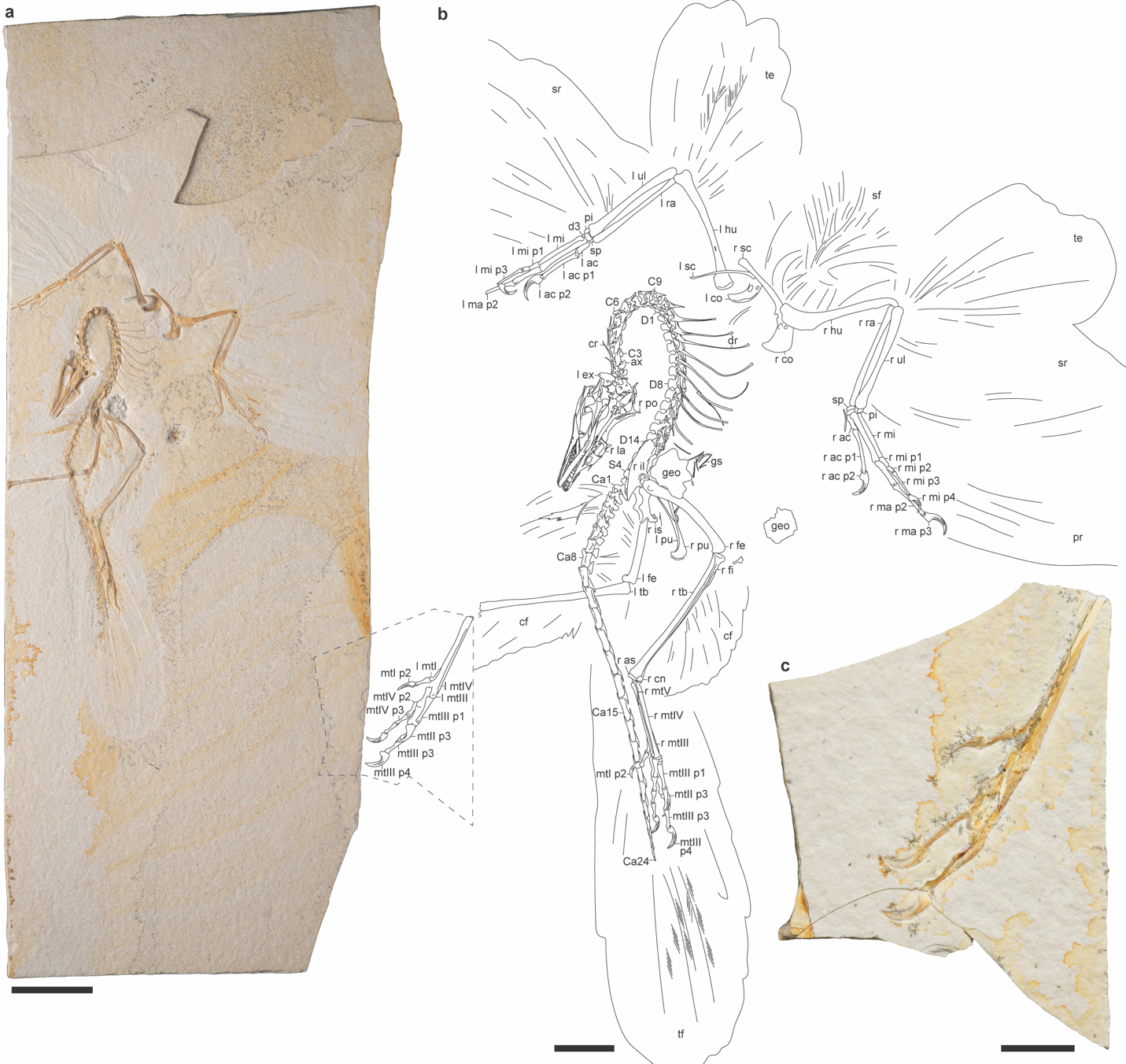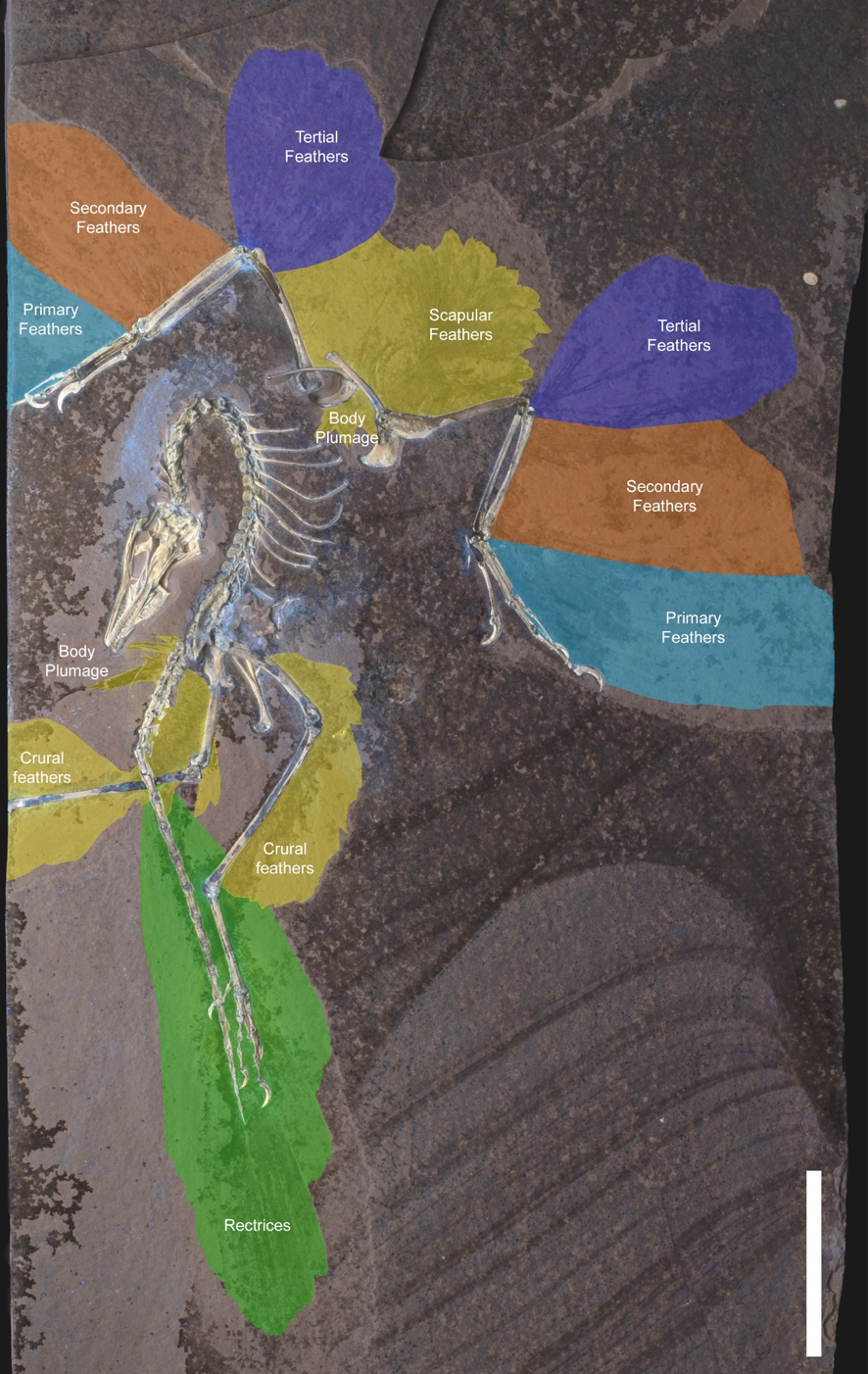Recently, a joint Chinese-American research team led by Dr. HU Han from the Institute of Vertebrate Paleontology and Paleoanthropology (IVPP) of the Chinese Academy of Sciences and Dr Jingmai O'Connor from the Field Museum of Natural History (Chicago) announced the discovery and scientific description of the 14th known specimen of Archaeopteryx, known as the Chicago Archaeopteryx. Owing to its exceptional and exquisite preservation, the team was able to use advanced techniques like high-resolution CT scanning and 3D reconstruction to investigate the skeletal, soft tissue, and feather structures in unprecedented detail. Their findings provide crucial insights into the evolution of the skull and adaptations for flight during the critical transition from non-avian dinosaurs to birds. The study was published in Nature in May 2025.
Archaeopteryx is one of the most famous fossil animals in the world. Its discovery shortly after the publication of Darwin's On the Origin of Species offered strong support for the theory of evolution. For more than 160 years, this enigmatic "first bird" has fascinated scientists and the public alike. However, due to the limitations of preservation and technology, many mysteries about this ancient animal have remained locked in the Solnhofen limestone where they were found. The newly described Chicago specimen, acquired by the Field Museum in 2022, is the smallest known Archaeopteryx, roughly the size of a pigeon. It is nearly complete, with many bones preserved in relatively three dimensions, and includes rare traces of soft tissues such as skin, toe pads, and feathers-making it a landmark specimen in the study of early bird evolution.
Thanks to the specimen's exceptional preservation, the researchers successfully conducted high-resolution CT scanning and digital 3D reconstruction. The results reveal an almost completely preserved skull, including a remarkably intact palatal region. The palatal morphology of the Chicago specimen is intermediate between that of troodontids and more derived Cretaceous birds, representing a critical evolutionary stage in the transition from the rigid, immobile skulls of non-avian theropods to the lighter, more kinetic skulls of birds. In addition to providing new clues about Archaeopteryx, this reconstruction lays the groundwork for future biomechanical and functional analyses of fossil bird skulls. Beyond skeletal features, the study also documented preserved soft tissues. In particular, the shape of the toe pads resembles that of modern ground foraging birds, suggesting that Archaeopteryx was adapted for non-raptorial terrestrial locomotion. These findings support the idea that Archaeopteryx may have led a mixed lifestyle, spending time on the ground and possibly in trees, indicating a broader ecological flexibility than previously recognized.
Significantly, the Chicago Archaeopteryx is also the first Archaeopteryx known to preserve tertials, which attach to the humerus and ulna and occupy the space between the wing and the body. These feathers are thought to contribute to a continuous aerodynamic surface during flight. Since such structures have never been observed in any non-avian feathered dinosaur, their presence in Archaeopteryx suggests they may represent a flight-related innovation, highlighting the evolutionary step toward powered flight.
The Chicago Archaeopteryx also marks a step forward in the application of advanced technological methods in paleontology, especially in 3D scanning and reconstruction, soft tissue identification, and ecological inference for extinct bird lineages.
This study was supported by the National Natural Science Foundation of China.

Chicago Archaeopteryx ecological restoration drawing by Michael Rothman (Image by O'Connor et al. Nature)

Photograph and interpretive line drawing of the Chicago Archaeopteryx (Image by O'Connor et al. Nature)

3D model of skull of the Chicago Archaeopteryx and the palatal evolution in paravians (Image by O'Connor et al. Nature)

Feather distribution of the Chicago Archaeopteryx (Image by O'Connor et al. Nature)






